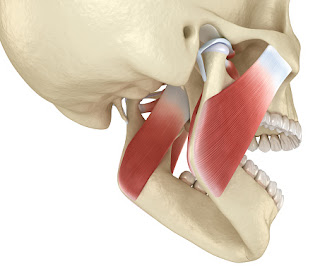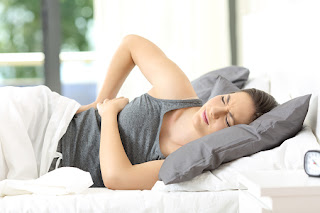Natural TMJ Remedies
TMJ disorder, also called temporomandibular joint dysfunction (TMD or TMJD), can cause extreme discomfort and pain to people who have it. According to the National Institute of Dental and Craniofacial Research, about 5% to 12% of Americans suffer with TMJD.
Each side of the head has TMJ, which sits just in front of the ears. The temporomandibular joint merges the mandible (lower jaw) and the temporal bone of the skull. TMJ is one of the most intricate joints in the body. Why is this so? The TMJ enables the movement of the jaw in many directions from moving forward and back, opening and closing, to gliding side to side. These movements allow us to perform important actions such as chewing, yawning, and talking.
Similar to how the spine has discs, the TMJ also has a disc within it. The disc absorbs shock and force whenever the joint moves, including when eating and during other movements.
Symptoms and Signs of TMD
TMD can arise from different causes, and the pain and experience of it can vary from person to person. Here’s a list of some of the common signs of a TMJ disorder:
Stiffness of the jaw
Popping
Clicking
Grinding
Jaw locking
Grinding of the teeth (bruxism)
Upper and lower teeth that don’t fit together properly
Jaw pain is often related to other problems or conditions. You may also experience the following symptoms if you a disorder affecting your TMJ:
Headaches
Neck pain and stiffness
Facial pain
Earaches
For others, however, TMJ disorder can be a chronic issue that results in constant pain and discomfort. For most people, pain in the area of the jaw joint or muscles does not signal a serious problem. Below are the sustainable treatment alternative for TMJ disorders.
Strengthening exercises:
Place a thumb under your chin and push your chin downward against it. Continue opening the mouth against moderate force from your thumb, and then hold it open for 5-10 seconds.
Open your mouth as wide as you comfortably can. Put your index finger between your chin and lower lip. Push inward while closing your mouth against the resistance.
TMJ pain is often the product of tension-producing stress. Simple relaxation exercises can help.
Relaxation exercises:
Slowly inhale, allowing your stomach rather than your chest to expand. Exhale slowly while making your exhalation last about as long as your inhalation. Repeat 5-10 times.
While sitting or lying in a comfortably supported position, tense and release tension from each muscle in your body. Begin with the feet and work upwards to the head.
If TMJ pain is caused by teeth grinding or clenching, a nighttime bite guard can help. Although these are available over the counter, a fitted one designed by a dentist offers greater protection and more durability.
Other strategies that can reduce TMJ pain include:
Applying an ice pack to the affected area for 20 minutes. Some people find that alternating heat and ice, 15 minutes on and 15 minutes off, offers even greater relief.
Using non-steroidal anti-inflammatory drugs (NSAIDs), such as ibuprofen, to offer temporary relief.
Massaging the neck and head muscles to control tension radiating from the TMJ.
Controlling stress and anxiety. Psychological distress can cause people to tense their muscles without thinking, making the pain worse. It may also cause teeth grinding.
Proper dental care can help prevent TMJ pain by maintaining tooth alignment. Cavities, broken or missing teeth, and gum inflammation may make the pain worse. People should brush and floss their teeth, and aim to see a dentist every 6 months unless recommended otherwise. People should always tell their dentist if they have TMJ pain. It is also important to chew using both sides of the mouth. Some people with TMJ pain avoid chewing on one side because of pain. Over time, this makes the pain worse.




Comments
Post a Comment